Talks of trades swirl around Phil Kessel more frequently than a cloud of dust swirls around the Peanuts character Pigpen.
With whispers and rumours circulating once again that the Pittsburgh Penguins sniper could be on the move, let’s take a look back at the first deal the now 30-year-old two-time Stanley Cup winner was involved in – a blockbuster between the Boston Bruins and Toronto Maple Leafs that happened nearly nine years ago.
The Kessel Trade to Toronto
The trade went down on Sept. 19, 2009, less than a month before the puck dropped on the 2009-10 season. Brian Burke, less than a year into his role as the Maple Leafs’ general manager, was looking to get the team to their first playoff appearance since before the 2003-04 lockout. Burke made a splash by acquiring Kessel, an elite youngster who had a breakout 36-goal season with the Bruins in 2008-09.
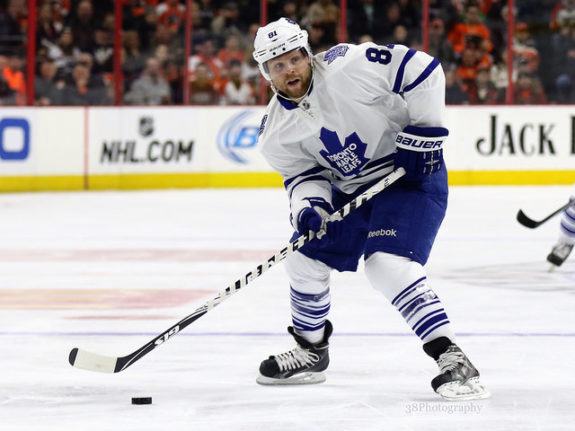
(Amy Irvin / The Hockey Writers)
Kessel didn’t come cheap, though — Burke shelled out a lot in return. To get Kessel out of black and gold and into blue and white, he gave up three big draft picks: his first and second-rounders in the 2010 NHL Entry Draft, and his first-rounder in the 2011 draft.
The move, like most in the Toronto media fishbowl, was controversial. Many thought Burke was playing with fire by giving up three high picks when the team’s pool of young talent wasn’t that deep outside of Nazem Kadri and Luke Schenn.
Maple Leafs’s Pain Was the Bruins’ Gain
The worst nightmare of those who feared the Leafs would finish near the basement, making the picks Boston acquired even more valuable, came true. Kessel scored 30 goals but his presence didn’t begin to solve the Maple Leafs’ scads of shortcomings — they finished dead last in the Northeast Division with a dismal 30-38-14 record.

Because of that, the picks they dealt to Boston turned out to be very high in each round — second and 32nd overall. With those two picks, the Bruins selected Tyler Seguin, — a Plymouth Whalers standout coming off a 106-point season, and Jared Knight — a London Knights forward coming off a 70- point campaign, respectively.
The Bruins continued to reap the rewards of the Maple Leafs’ incompetence a year later, selecting Dougie Hamilton, a towering 6-foot-6 defenceman out of Niagara, at ninth overall.
Kessel’s Fruitful Seasons in Toronto Couldn’t Fix Leafs’ Futility
Even though many felt the Leafs had given up too much to acquire him, Kessel found personal success in Toronto. Over six seasons and 446 games with the Maple Leafs, he lit the lamp times 181 and tallied 394 points. He was also durable, playing in all 82 games of four different seasons and all 48 games of the lockout-shortened 2012-13 season.
Kessel was not, however, the cornerstone player many were expecting. His strong numbers did not translate into success for the team — wins largely continued to elude the Maple Leafs during his tenure. They made just one playoff appearance with Kessel, which came in the lockout-shortened year. They were ultimately dispatched in the first round by Kessel’s old club.
Kessel’s offensive talents, though, were obvious: he made opposing teams’ goalies quake in their skates with his wickedly accurate wrist shot and often used his explosive speed to generate chances off the rush.
Immediate Success for the Bruins
It must have rankled Burke that the Bruins won the Stanley Cup the year after choosing Seguin with the draft pick he’d dealt to them. In the regular season, Seguin had 22 points and added seven more in 13 playoff games.
Seguin wasn’t the only straw stirring the Bruins’ drink in 2010-11. Their squad was skilled and balanced with a complement of forwards that included Milan Lucic, David Krejci, Patrice Bergeron, and Nathan Horton, and featured the lights-out goaltending duo of Tim Thomas and Tuukka Rask.
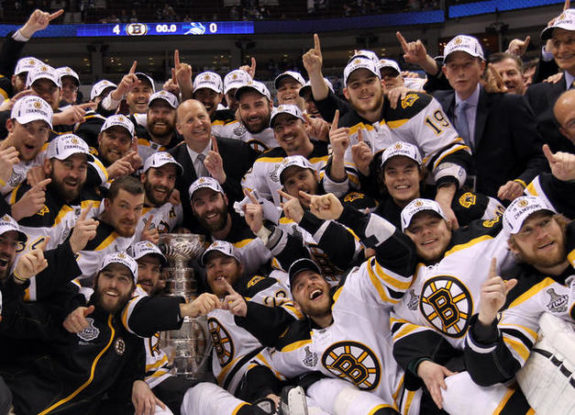
Neither Hamilton nor Knight played with the Bruins in their Stanley Cup-winning season. Hamilton’s first year with the Bruins didn’t come until 2012-13, and Jared Knight never actually played a game in the NHL.
While the trade was high-profile, most of the players involved — like the ones in the Ilya Kovalchuk deal two years later — found themselves on the move to other franchises fairly quickly. By 2015, the trade had been completely undone.
Bruins Bungled Chance to Be Trade’s Big Winners
If Seguin and Hamilton were still with the Bruins today, they would be the runaway winners of the Kessel trade. Unfortunately for them, they blew it. Their picks were good (save for Knight, who didn’t pan out) but their management of the players they picked was poor. It’s only because of the Bruins’ mismanagement that it’s difficult to declare a clear-cut winner.
In 2013, after just three seasons and 203 games with the Bruins, GM Peter Chiarelli unceremoniously shipped Seguin out of town to the Dallas Stars along with a few others in exchange for Loui Eriksson and a trio of prospects.
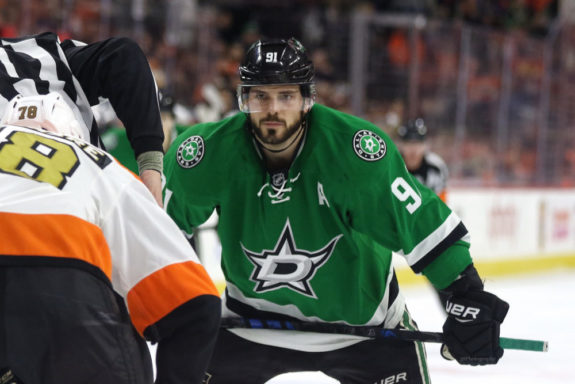
There were rumours of tension between Seguin and the organization — Seguin’s father, Doug, claimed the Bruins were annoyed by the 21-year-old’s party lifestyle. Chiarelli was vague about his reasoning, only saying the trade was “not a strictly on-ice decision.”
Unlike the Kessel trade, the winner of the Bruins/Stars deal is clear as day. Seguin, who was just rounding into form, has since logged five straight seasons with 70-plus points. By 2017, the Bruins had nothing left from the trade.
It’s a similar story with Hamilton. Like Seguin, he played only three years for the Bruins before being sent packing. In 2015, the Bruins sent the big D-man to Calgary for a first-round pick and two second-round picks in that year’s draft. With the picks, the Bruins selected Zach Senyshyn, Jakob Forsbacka-Karlsson, and Jeremy Lauzon.
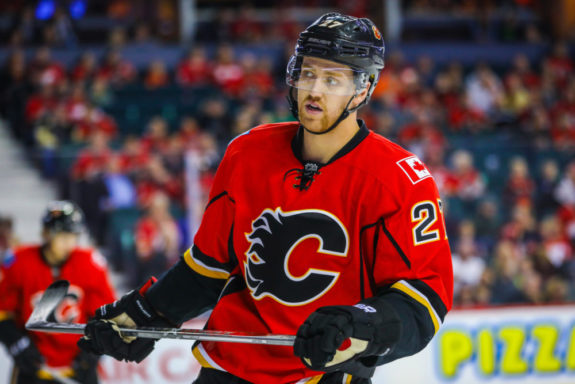
The hulking Hamilton is a mainstay on the Flames’ blue-line, logging an average of over 20 minutes of ice time per game and three straight seasons of 40-plus points. The trio of Senyshyn, Forsbacka-Karlsson, and Lauzon have combined for a grand total of one NHL game.
Kessel Wore out Welcome Mat in Toronto
Meanwhile, as the Bruins were busy burning their assets, the Maple Leafs’ fan base and Toronto media were becoming disenchanted with their side of the trade as well. They loved Kessel’s shot and goal-scoring ability, but hated everything else about him.
They hated his lack of personal responsibility. They hated his apparent lack of fitness and his bad eating habits. They hate his flippant, uncaring attitude. They hated the way he handled himself with the media. They hated that he was making $8 million a year and not turning their team into a winner.
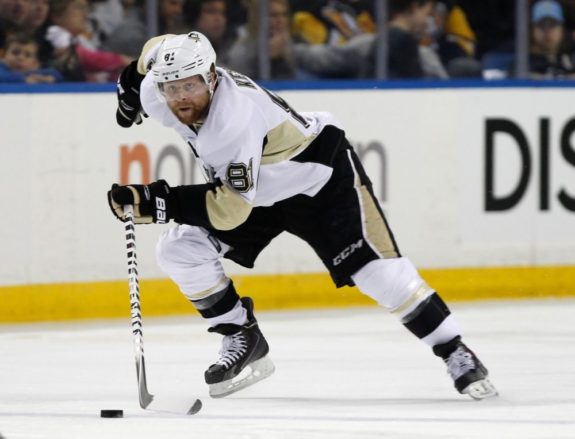
After six tumultuous years, the last domino of the trade fell when Kessel was dealt to Pittsburgh. The ‘scorched earth’ rebuild was on.
“The second-half Leafs were the most destroyed team in Toronto history,” The Toronto Sun’s Steve Simmons wrote in a scathing column about Kessel, referencing their abysmal 30-44-8 record. “The flag carrier of despair was Kessel. He played like he didn’t care, insulted the jersey, the paying public, the people watching at home, the interim coaching staff.”
You can’t have him half-assing skating drills with a team trying to learn how to work,” Simmons continued. “You can’t have him being first off the ice with a team pushing to reach Babcock’s lofty goals. When you have an illness, you must get rid of the poison.
“Shanahan’s reinvention of the club could not proceed if Kessel remained part of the deplorable mix,” Toronto Star columnist Rosie DiManno wrote after the trade was finalized, before calling him “disengaged, unmotivated, out of shape, lazy, (and the) last guy on the ice at practice and first guy off.”
Kessel’s hoisted a pair of Cups with the Penguins over the last three seasons and tallied 221 regular points and 54 playoff points along the way. In the 2017-18 season, he put up a personal-best 92 points. Many pundits feel the Toronto media used Kessel as a scapegoat for their woes and their assertions were baseless.
I’ve met so many Toronto fans who demand me to claim that Phil Kessel is lazy.
It’s like someone who cheated on their ex-boyfriend to demand that their ex-boyfriend is a loser.
You’re the loser. Own it.
— Penguins Jesus (@PenguinsJesus) December 2, 2017
The Maple Leafs received Nick Spaling, Kasperi Kapanen, Scott Harrington, and first and third-round picks in the 2016 NHL Entry Draft in return. That’s not exactly a windfall, but they’ve managed to derive some benefit from what they received.
While Spaling and Harrington are gone and Kapanen is frustratingly inconsistent, the Maple Leafs used Pittsburgh’s first-rounder to acquire Frederik Andersen from the Anaheim Ducks in 2016. The goaltender has been a key figure in the Maple Leafs resurgence to respectability over the last two seasons.
More importantly, though, trading their most established player ensured they would stay in the running for top pick in the draft lottery, the prize being phenom Auston Matthews.
Final Thoughts
The trade was an interesting one, but there’s no clear winner. The Bruins botched their chance to be the victors by trading away Seguin and Hamilton before their primes for very little in return. The Maple Leafs retained Kessel for longer than the Bruins retained any of their pieces. However, they never found success in the Kessel era, eventually tanking and running him out of town on a rail.
Overall, the players involved in the nearly decade-old deal are making a bigger impact with their current franchises than they ever did with the Bruins or Maple Leafs.